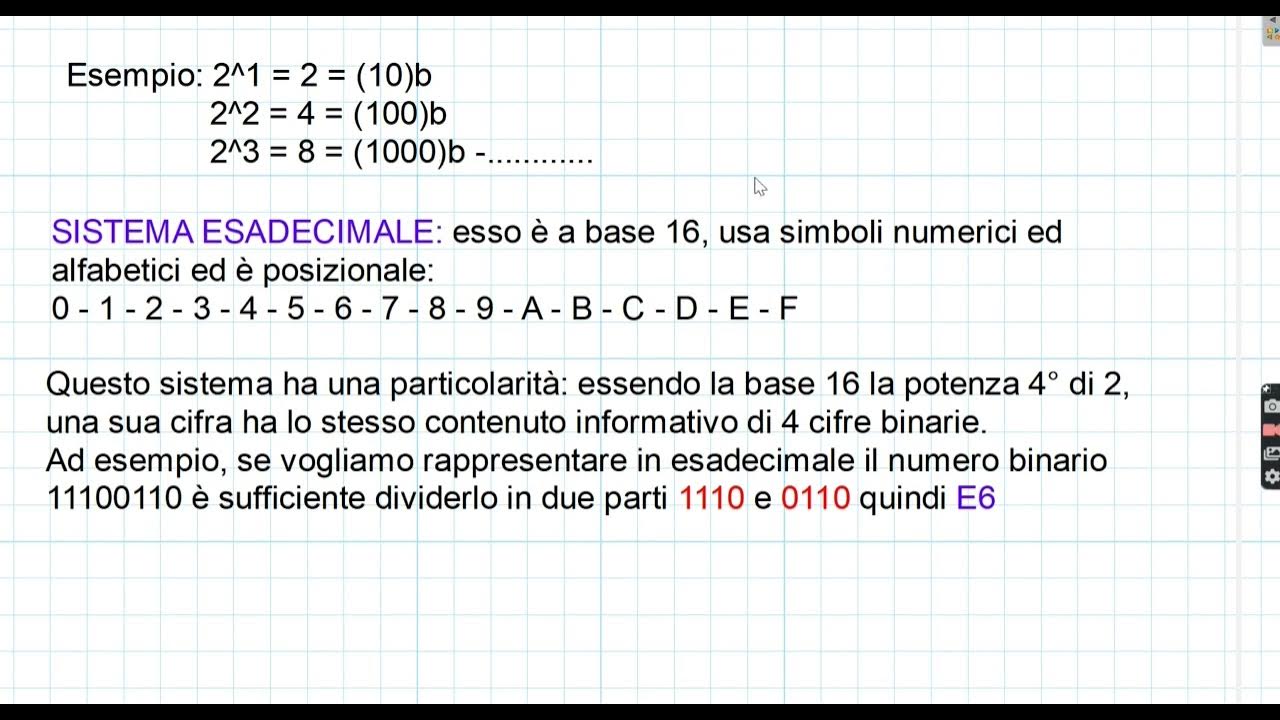Addition and Subtraction using 2's Complement Arithmetic | 2s Complement Addition and Subtraction
Summary
TLDRThis video tutorial from the All About Electronics YouTube channel explains 2's Complement Arithmetic, focusing on how to add and subtract signed binary numbers. It covers various scenarios, including adding two positive numbers, one positive and one negative, and two negative numbers, highlighting potential overflow issues. The video also demonstrates subtraction by converting it to addition of the first number and the 2's complement of the second. Practical examples with 5-bit and 6-bit representations are used to illustrate the process and emphasize the importance of considering the range to avoid invalid results.
Takeaways
- 📚 The video explains 2's Complement Arithmetic, a method for performing addition and subtraction with signed binary numbers.
- 🔢 In 2's Complement addition, you add two numbers as usual, ignoring any carry that extends beyond the most significant bit (MSB).
- 🚫 If a carry occurs beyond the MSB, it indicates a potential overflow condition where the result exceeds the representable range.
- 💡 The script uses 5-bit signed binary numbers as examples to illustrate the process of addition and the concept of overflow.
- 🔄 To find the 2's Complement of a number, first invert the bits to get the 1's Complement, then add 1.
- ➕ When adding two positive numbers, the result should also be positive, indicated by a 0 in the MSB.
- ➖ When subtracting a number, it is equivalent to adding the 2's Complement of the number being subtracted.
- 🔄 For negative numbers, the 2's Complement representation is found by inverting the bits from the left after the first '1' is encountered.
- 📉 Adding two negative numbers should yield a negative result; if the result is positive, it indicates an invalid outcome due to overflow.
- 🛠️ The script demonstrates that performing arithmetic in a higher bit-width (like using 6 bits instead of 5) can prevent overflow and yield valid results.
Q & A
What is 2's Complement Arithmetic?
-2's Complement Arithmetic is a method used to perform addition and subtraction of signed binary numbers. It allows for the representation of negative numbers in binary form and simplifies the process of arithmetic operations.
How is addition performed in 2's Complement form?
-In 2's Complement form, addition is performed by adding two numbers column by column, similar to unsigned binary addition. Any carry generated after the most significant bit (MSB) is ignored.
What is the significance of the MSB in 2's Complement addition?
-The MSB in 2's Complement addition indicates the sign of the result. If the MSB is 0, the result is positive; if it's 1, the result is negative.
What is an overflow in the context of 2's Complement addition?
-An overflow occurs when the result of a 2's Complement addition operation exceeds the maximum or minimum value that can be represented with a given number of bits.
How can you determine if a 2's Complement addition is correct by looking at the sign bits?
-If the sign bits of the two numbers being added are the same and the sign bit of the result is different, the addition is likely incorrect, indicating a possible overflow or underflow.
What is the range of numbers that can be represented in a 5-bit 2's Complement form?
-In a 5-bit 2's Complement form, the range of numbers that can be represented is from -16 to +15.
How do you find the 2's Complement of a binary number?
-To find the 2's Complement of a binary number, first invert all the bits (0s become 1s and 1s become 0s) to get the 1's Complement, then add 1 to the least significant bit.
How is subtraction performed in 2's Complement form?
-Subtraction in 2's Complement form is performed by converting the subtrahend to its 2's Complement and then adding it to the minuend.
What is the result of adding two negative numbers in 2's Complement form?
-When adding two negative numbers in 2's Complement form, the result is also negative, assuming no overflow occurs.
Why is it important to consider the range when performing 2's Complement arithmetic?
-It is important to consider the range in 2's Complement arithmetic to ensure that the result of an operation does not exceed the maximum or minimum values that can be represented with the given number of bits, thus avoiding invalid results or overflow.
Outlines

هذا القسم متوفر فقط للمشتركين. يرجى الترقية للوصول إلى هذه الميزة.
قم بالترقية الآنMindmap

هذا القسم متوفر فقط للمشتركين. يرجى الترقية للوصول إلى هذه الميزة.
قم بالترقية الآنKeywords

هذا القسم متوفر فقط للمشتركين. يرجى الترقية للوصول إلى هذه الميزة.
قم بالترقية الآنHighlights

هذا القسم متوفر فقط للمشتركين. يرجى الترقية للوصول إلى هذه الميزة.
قم بالترقية الآنTranscripts

هذا القسم متوفر فقط للمشتركين. يرجى الترقية للوصول إلى هذه الميزة.
قم بالترقية الآنتصفح المزيد من مقاطع الفيديو ذات الصلة

How To Add and Subtract Binary Numbers | Computer Science

82. OCR A Level (H446) SLR13 - 1.4 Floating point arithmetic

Negative Number and Hexadecimal Representation

ED2. Sistemi di Numerazione

83. OCR A Level (H446) SLR13 - 1.4 Bitwise manipulation and masks

8. CAMBRIDGE IGCSE (0478-0984) 1.1 Signed integers using two's complement
5.0 / 5 (0 votes)
